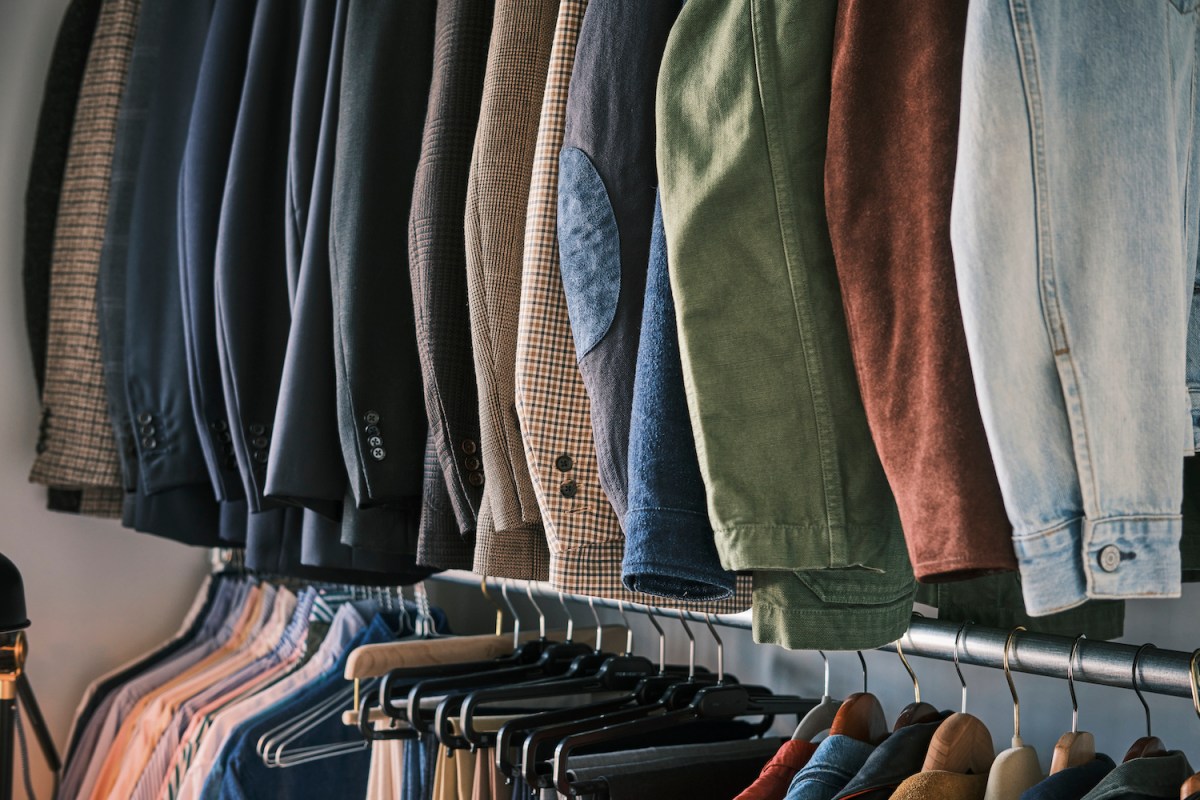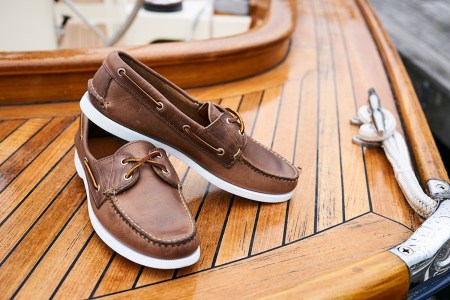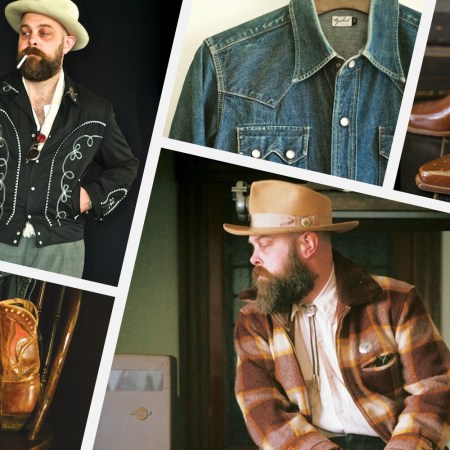It’s an age-old problem, best summed up by a 2020 tweet from Twitter’s “Menswear Guy,” Derek Guy: the more likely you are to live somewhere that appreciates style, the less likely you are to have the closet space to properly store your clothing.
And by “properly,” I mean in a way that’s not going to destroy it. The most basic articles of clothing—socks, underwear, T-shirts—can be rolled up and packed together tighter than sardines without leaving a dent. But more constructed, bigger-ticket items such as dress trousers, tailoring and outerwear are at risk of losing their shape and developing unsightly creases and folds if stuffed into a broom closet and left to wither without a millimeter of clearance between them.
The solution is obvious: move to the suburbs and buy a five-bedroom with California closets. Failing that, you could adapt some strategies to more efficiently and effectively store your finest duds, as laid out by some clothing industry insiders and plain ol’ regular guys below.
Glenn Au, proprietor of the classic men’s store Junior’s in Philadelphia, navigates his row home’s confines by hanging off-season clothing in the basement. But before he had access to subterranean storage space, Au employed a simple but effective trick: adding a second rod to his closet.
“Basically, it doubled the hanging space within a single closet,” he says. “I could keep all of my shirts and all of my tailored clothing, off-season or not, in the same closet, which was really nice.”
Mark Lombardi, a building manager living in the Boston suburbs, has also learned how to make the most of a historic home’s limited closet space. In Lombardi’s case, that meant picking up a few valet rods from Wayfair. The inexpensive steel rods, which hang at a 45-degree-angle, could be mounted flat against the wall in small, awkward closet corners that couldn’t otherwise support a horizontal beam. Its six slotted holes are meant to accommodate a half-dozen hangers, though Lombardi’s managed to fit 12.
But what do you do when your existing closet space is practically zilch? Lawyer Alexander Dettwyler confronted this problem when he moved from a house in Pittsburgh with a walk-in-closet to the one-bedroom Brooklyn apartment he shares with his wife. As his paltry new closet filled up after just four wool coats and a parka, he purchased a double-decker “z-rack”, a type hanging clothing trolley that’s typically used for commercial purposes.
How Rancourt Built America’s Next Great Heritage Brand
Inside the family business that saved itself from offshoring, weathered a pandemic and continues to make moccasins the old-fashioned Maine wayIts two tiers essentially created a closet where there was none, allowing Dettwyler to hang his entire tailored wardrobe with plenty of space between the garments, and settle two IKEA shoe racks against its base. “I’m not willing to have things be wrinkled, and I’m also not willing to have to dig through stuff” he says of his impetus for buying the rack, which he purchased from zracks.com for under $200.
The commercial clothing rack solution is seconded by Myles Kusaba, a Brooklyn-based luxury brand consultant who relies on a retail-style rolling rack he installed in his bedroom (his partner claimed the single closet). In addition to the rack, he also utilizes a freestanding “valet” coat rack that sits in his living room.
“It may look a bit strange, but I actually think it functions well as a design accent,” Kusaba says of the smaller rack. “I usually have hung a couple lightweight blazers, and perhaps a sport shirt or two and I think aesthetically it works in a sort of Ralph Lauren-Mansion way as opposed to a department store vibe.”
When it came to the hangers themselves, our responders were of one voice: no dinky metal specimens, as such drycleaner freebies can distort the shoulders of a suit jacket or overcoat. But Sean Crowley, owner of Brooklyn’s Crowley Vintage, has another hanger commandment: uniformity.
“In the store it’s the same approach that I use at home. I use one hanger for everything,” he says, endorsing IKEA’s highly affordable Bumerang model, which can be picked up in 8-packs for $8.99
“That way, not only does it look clean and more professional and less thrift shop, it also maximizes the use of the space,” he continues. “It’s when you have a curved hanger, and a straight hanger, and then a different curved hanger and then a different straight hanger — that eats up so much space.”
Likewise, those relying on garment bags to safely store off-season clothing should ensure they’re maximizing their space. William Wong, founder of the London-based garment and shoe care brand Arterton, prescribes garment bags that can comfortably fit multiple jackets, such as the waxed cotton iterations stocked by his business that can hold up to three.
“If you are using garment bags to help protect your clothing from moths, make sure that they are garment bags that can accommodate multiple hangers in order to save space,” Wong says. “The ones that are given away likely do not have this function.”
Much of the advice proffered so far has focused on finding the right tools, from hanging racks to hangers. But what’s a measure you could pull off right now, no gear or installation required?
Jake Mueser, the “J.” behind West Village tailor J. Mueser, practices a “triple-hanging method” that’s precisely what it sounds like. Mueser will hang several pairs of trousers and as many as three jackets from the same hanger, like a Russian nesting doll. If the hanger has a trouser clip, he’ll start by first tucking a pair of trousers under said clip, and then throwing another trouser over the first pair, which will simply hang in place. Next he’ll hang a jacket on the hanger’s shoulders, then another and another, like a Russian nesting doll.
However, there’s an art to pulling off this menswear matryoshka. He wouldn’t place a fabric that might be damaged by pressure, such as velvet or corduroy, below another jacket, and will ideally start with the least bulky fabric as the base. “If I had a flannel suit, I might go worsted, flannel, tweed,” he says.
He also takes care to ensure that the stacked jackets are laying flush below one another, with their sleeves fully extended and their buttons buttoned. That way, they can emerge from a short period of storage without battle scars.
“It’ll work for like two months,” Mueser says of the method. “You don’t want the lapel to be pushed up and doing something weird. So, I make sure that everything’s laying pretty seamlessly.”
For all this talk of universal hangers and triple-stacked jackets, we haven’t yet touched on what might be the most vital organizational tool of all: letting go of anything you don’t wear.
“They just take up space,” Au says of hanging but rarely worn clothing. “It’s time to get them out so that everything else can breathe a little bit better.”
The clothing and its owners, we might add.
This article was featured in the InsideHook newsletter. Sign up now.
























